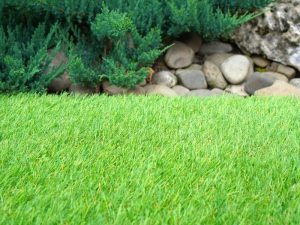A lush, green lawn can be the heart of any outdoor space, giving a fresh, inviting feel. However, turf often experiences stress due to environmental challenges, leaving it tired and worn. Knowing what to watch for is the first step in keeping your lawn thriving. Let’s look at the common signs of turf stress and what can be done to prevent or address them.
What is turf stress, and why does it happen?
Turf stress occurs when grass experiences adverse conditions, making growing and staying green difficult. Common causes include extreme weather, nutrient deficiencies, pests, and foot traffic. Sydney’s climate can be harsh on grass, with hot, dry summers and cold winters. These variations can stress turf if it needs to be adapted to local conditions or maintained correctly. Spotting early signs and acting quickly can help prevent long-term damage.
What causes turf to appear dull or discoloured?
Discolouration is an early warning sign. It may be caused by:
- Lack of water: Dry conditions can make grass yellow.
- Nutrient deficiency: Without essential nutrients, turf turns pale.
- Sun damage: Too much sun, typical in summer, scorches grass.
- Salt build-up: Fertilisers used without proper watering can cause salt build-up.
How does patchiness in turf signal potential stress?
Patchiness is another tell-tale sign that turf is struggling. You might notice irregular bare spots throughout your lawn, indicating several issues:
- Soil compaction: High foot traffic compacts the soil, making it difficult for grassroots to get the necessary nutrients.
- Pests or fungal diseases: Pests like grubs or diseases like brown patches often cause bald spots.
- Shade levels: Areas under trees or in the shadow of buildings may get less sun, leading to patchy growth.
What does thinning grass tell you about turf health?
Thin, sparse grass is a clear sign of poor turf health. Here’s why it happens:
- Poor root development: Compacted soil can make it hard for roots to grow deeply.
- Underwatering or overwatering: Too little water prevents growth, while too much can wash away essential nutrients.
- Excessive thatch build-up: A thick layer restricts air, water, and nutrients from reaching roots.
- Low-quality soil: Sandy or clay-heavy soils often need more nutrients, leading to thin grass that struggles to fill.
Is your turf struggling with pests or diseases?
Pests and diseases can quickly turn a green lawn into a patchy mess. Here’s what to look out for:
- Insect damage: Grubs, caterpillars, and beetles can damage roots and create dead patches.
- Fungal infections: Conditions like dollar spot, rust, or brown patch can kill grass in rings or clusters.
- Weeds: An invasion of weeds can starve grass of nutrients, leaving it thin and stressed.
- Animal activity: Pets or local wildlife digging up parts of the lawn can cause trauma to grass.
Could soil quality be impacting turf growth?
Healthy soil is essential for healthy turf. It provides vital nutrients and structural support for solid root growth. In Sydney, soil types vary, and each has unique challenges:
- Clay soil: Tends to hold water and may cause waterlogging, leading to root rot.
- Sandy soil: Drains too quickly, meaning water and nutrients may not stay in the root zone.
- Nutrient deficiency: Depleted soil can’t provide the nutrients turf needs to thrive.
- Ph imbalance: Turf struggles when soil is too acidic or alkaline; testing and adjustments can help.
How does foot traffic contribute to turf stress?
Heavy foot traffic can lead to compacted soil, making it harder for grass to grow. Signs that foot traffic may be stressing your turf include:
- Bald or worn spots: Areas with frequent foot traffic can become bare or trampled.
- Compacted soil: Compact soil reduces airflow, water absorption, and nutrient penetration.
- Damaged roots: Regular traffic breaks down grassroots, slowing or halting growth.
- Pathways or trails: Repeated walking can create visible paths that can only be repaired with aeration and reseeding.
How does irregular watering affect turf stress?
Watering your new lawn isn’t a “one size fits all” solution, especially in Sydney’s fluctuating climate. Common watering issues include:
- Underwatering: Turf will dry, brown, and brittle without adequate moisture.
- Overwatering: Too much water can drown roots, lead to fungal growth, and wash away nutrients.
- Inconsistent watering: Watering only some of the lawn or at irregular intervals leads to uneven growth.
- Seasonal adjustments: Not adjusting watering based on season or rainfall can starve or saturate turf, causing stress.
Why should you consider professional turf care services for managing turf stress?
Professional turf care offers tailored solutions for local conditions and specific needs. Here’s why it’s beneficial:
- Expert diagnosis: Professionals can accurately identify the causes of turf stress, saving time and preventing guesswork.
- Sustainable practices: They use eco-friendly methods to manage pests and improve soil quality.
- Local expertise: With knowledge of Sydney’s climate and soil, professionals can help you choose the perfect turf for your lawn and provide expert maintenance advice.
- Customised solutions: Professional services can include everything from regular mowing and aeration to full-scale renovations.
What maintenance tips can prevent turf stress?
Preventative maintenance goes a long way in keeping turf stress-free. Here are some essential tips:
- Regular mowing: Keeping grass at an optimal height supports root health and reduces stress.
- Seasonal fertilising: Applying fertiliser at critical times boosts growth and prevents nutrient deficiencies.
- Consistent watering: Establish a schedule based on season, grass type, and soil to prevent drought or over-saturation.
- Aeration and dethatching: Regularly aerating and removing thatch improves soil structure and root growth.
- Weed and pest management: Stay on top of weed and pest control to reduce competition and damage to turf.
Keep your turf lush and resilient all year
Recognising the signs of turf stress is vital for maintaining a lush, vibrant lawn. By understanding the causes of turf stress, from environmental factors to soil quality and pests, you can take proactive steps to implement turf stress solutions and restore your turf’s health. Regular maintenance, proper watering, and professional care can make a significant difference.
With over 15 years of experience, A1 Gardening & Landscaping Sydney is a trusted provider of high-quality garden and landscaping services. Our commitment to honesty, integrity, and customer satisfaction sets us apart. We pride ourselves on delivering exceptional results and guaranteeing quality service. Our skilled team understands the intricacies of gardening and landscaping, bringing your outdoor vision to life. Experience the difference with A1 Gardening & Landscaping Sydney! See why we’re the preferred choice for your gardening and landscaping needs.



